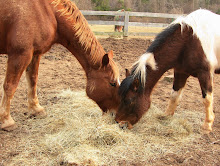Choosing the Right Helmet
A properly fitted helmet is essential to riding safely. It is important to think about the type of riding you’ll be doing – is the helmet suitable for the discipline you pursue? Also, think about where you’ll be buying your helmet – is the retailer trained in fitting helmets helmets? And last, do you know what a well-fitted helmet feels like?
Safety
The emphasis on safety and protection from impact in a fall, as well as the helmet’s ability to stay in place, should be your number one priority. Check with your trainer, riding establishment or your sport’s governing body for their helmet safety requirements. It is paramount to your safety to have the correct helmet fit.
Fit & Comfort
Each model of riding helmet fits differently, even within helmet brands, so it’s important to try on several helmets at the tack store or saddlery with the help of a trained helmet fitter. Look specifically for an approved retailer with a Helmet Fitting Certificate. They will have extensive knowledge of the different ranges available, be able to help you choose the right model, correctly fit the helmet to your head and make any necessary adjustments. The new helmet should be a snug fit, as it will form to the shape of your head as you wear it. A new helmet should never rock backwards, forwards or sideways. A helmet that moves on the head significantly reduces the level of protection it is designed to offer.
Style
The helmet fitter will know which type of helmet is suitable for the type of riding you enjoy. Helmets are available in many different styles, materials such as velvet, suede and leather are just a few of the most popular. Such variety allows each rider to choose a helmet that reflects their own personal style.
Helmet Life
Your riding helmet is designed to protect your head and help reduce the chance of injury. Bear in mind that helmets should be retired following a severe blow – essential if the rider loses consciousness or has a severe headache. Even after just being dropped onto a hard, unforgiving surface, your helmet may be damaged, even though it may not be immediately apparent visually.
Realistically, riding helmets should be replaced after about five years, which is the expected lifespan of a helmet. If however, you suspect that yours may have been damaged during this time, then it should be replaced by a new one, as a subsequent impact may not give you the adequate protection you need.
Helmet Fit
Your trained helmet fitter will start by measuring your head to establish the correct size and follow with a determination of which models may suit your head shape. After trying on different types of helmets, a proper match should be confirmed by putting the chosen helmet on again and adjusted as necessary.
When being fitted, take care not to choose a helmet that’s too large, because firmness can be mistaken for tightness.
The fit of the helmet’s harness is also important. Some checks to ensure your harness is secure:
- Check the length of the chin strap. When correctly adjusted, it should sit just under the chin and gently touch the bottom of the ear lobe – the strap should not be around the throat.
- As far as tightness is concerned, you should be able to put a finger between the strap and your chin and while it should be reasonably tight, it should also allow you to talk comfortably.
- The rubber band on the chin strap should lie close to the buckle, as it helps keep the webbing or leather strap secure and stops it from slipping through the buckle.
- The harness laces at the back of the helmet should be secured tightly to ensure your helmet hugs your head. Always adjust the chin strap first, then the back laces. They must be taut enough to support the chin strap, but not enough to force it around the throat.
Helmet Care
To provide the best protection when you’re riding, a helmet is designed to be weaker than your head, so never do things to your helmet that you wouldn’t think of doing to your head. A helmet’s interior is made of a high-grade expanded polystyrene, full of microscopic bubbles. The layers of bubbles burst upon an impact and, as they burst, they protect your head and reduce the risk of injury.
Important point to remember:
- Helmets are sensitive to extreme heat (70°C+/158°F+), riding helmets should always be stored in an ambient temperature and out of direct sunlight. The tiny polystyrene bubbles inside the helmet will melt past these temperatures, so if you leave your helmet in a car on a hot day, the helmet could end up being damaged.
- Your helmet should never be dry-cleaned, exposed to solvents or put in the dishwasher. Always clean your helmet with specialist products specifically made for either the interior or exterior of the helmet.
Loretta
the natural horseman
clear communication/visible results






